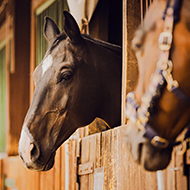App to track endangered flapper skates
Flapper skates' distinctive patterns mean the app can identify specific fish.
A free mobile app is set to help conservation scientists track numbers of critically endangered flapper skates in Scotland.
The SkateSpotter app allows users to take pictures of flapper skates they have spotted on the Scottish coastline, which are then used to identify the fish and track its movement.
It follows the success of an online database of flapper skate photos, which began in 2018. Ronnie Campbell, an angling charter skipper, gave 400 photographs to the Scottish Association for Marine Science (SAMS).
Since then, NatureScot has received contributions from even more anglers. The database now contains over 4,000 photos of over 2,500 individual flapper skates.
The flapper skates’ distinctive patterns mean that, with the help of artificial intelligence, the SkateSpotter app can now use the database to identify individual fish.
The app, available on both Android and iPhone, allows members of the public to submit photographs of flapper skates they have seen on the go. Older photographs can also be uploaded, as the app can recognise the photograph’s time stamp data.
When submitting a photo, users will be asked to log additional information about where the skate was seen, whether it was male or female, and its size. Once submitted, the skate will be matched against others on the database or added as a new individual.
Contributors will even be given updates on the skate if it is reported again, however sensitive information like fishing marks will not be shared without permission.
Data collected through SkateSpotter is already in use by the Marine Directorate in Aberdeen. The scientists modelled the population of flapper skates in the Loch Sunart to the Sound of Jura Marine Protected Area (MPA) last year.
The model revealed that numbers of skates had been recovering faster within the MPA than outside.
Jane Dodd, NatureScot’s elasmobranch specialist, said: “We encourage anglers, divers, fishermen and marine surveyors from all over Scotland to download the SkateSpotter app and become citizen scientists, helping us to understand and restore these amazing animals.
“An army of volunteers using SkateSpotter could generate a much more significant amount of data than a handful of scientists.
“Flapper skate are generally resident or show site fidelity (leaving and coming back to a site), but they do travel longer distances and we might be underestimating these because most of our SkateSpotter submissions come from specific areas. Imagine being the person who submits a photo of a skate from Shetland only to find the skate originated from Orkney or the west coast of Scotland!”
Image © Fenella Wood



 Zoetis has launched a new survey to identify management techniques for Equine Herpes Virus (EHV).
Zoetis has launched a new survey to identify management techniques for Equine Herpes Virus (EHV).